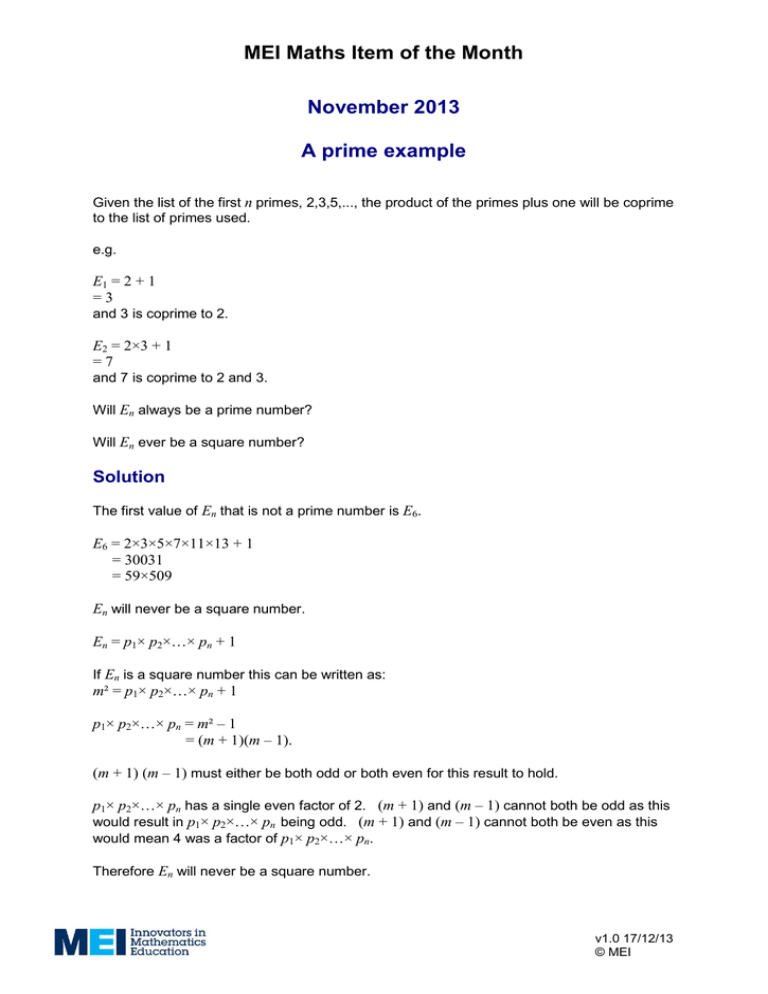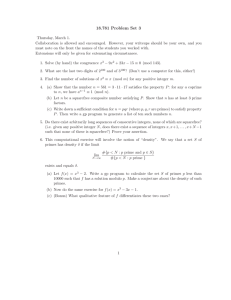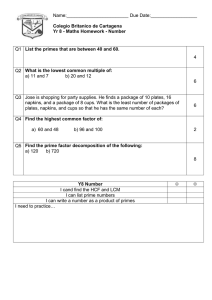MEI Maths Item of the Month November 2013 A prime example
advertisement

MEI Maths Item of the Month November 2013 A prime example Given the list of the first n primes, 2,3,5,..., the product of the primes plus one will be coprime to the list of primes used. e.g. E1 = 2 + 1 =3 and 3 is coprime to 2. E2 = 2×3 + 1 =7 and 7 is coprime to 2 and 3. Will En always be a prime number? Will En ever be a square number? Solution The first value of En that is not a prime number is E6. E6 = 2×3×5×7×11×13 + 1 = 30031 = 59×509 En will never be a square number. En = p1× p2×…× pn + 1 If En is a square number this can be written as: m² = p1× p2×…× pn + 1 p1× p2×…× pn = m² – 1 = (m + 1)(m – 1). (m + 1) (m – 1) must either be both odd or both even for this result to hold. p1× p2×…× pn has a single even factor of 2. (m + 1) and (m – 1) cannot both be odd as this would result in p1× p2×…× pn being odd. (m + 1) and (m – 1) cannot both be even as this would mean 4 was a factor of p1× p2×…× pn. Therefore En will never be a square number. 1 of 1 v1.0 17/12/13 © MEI











